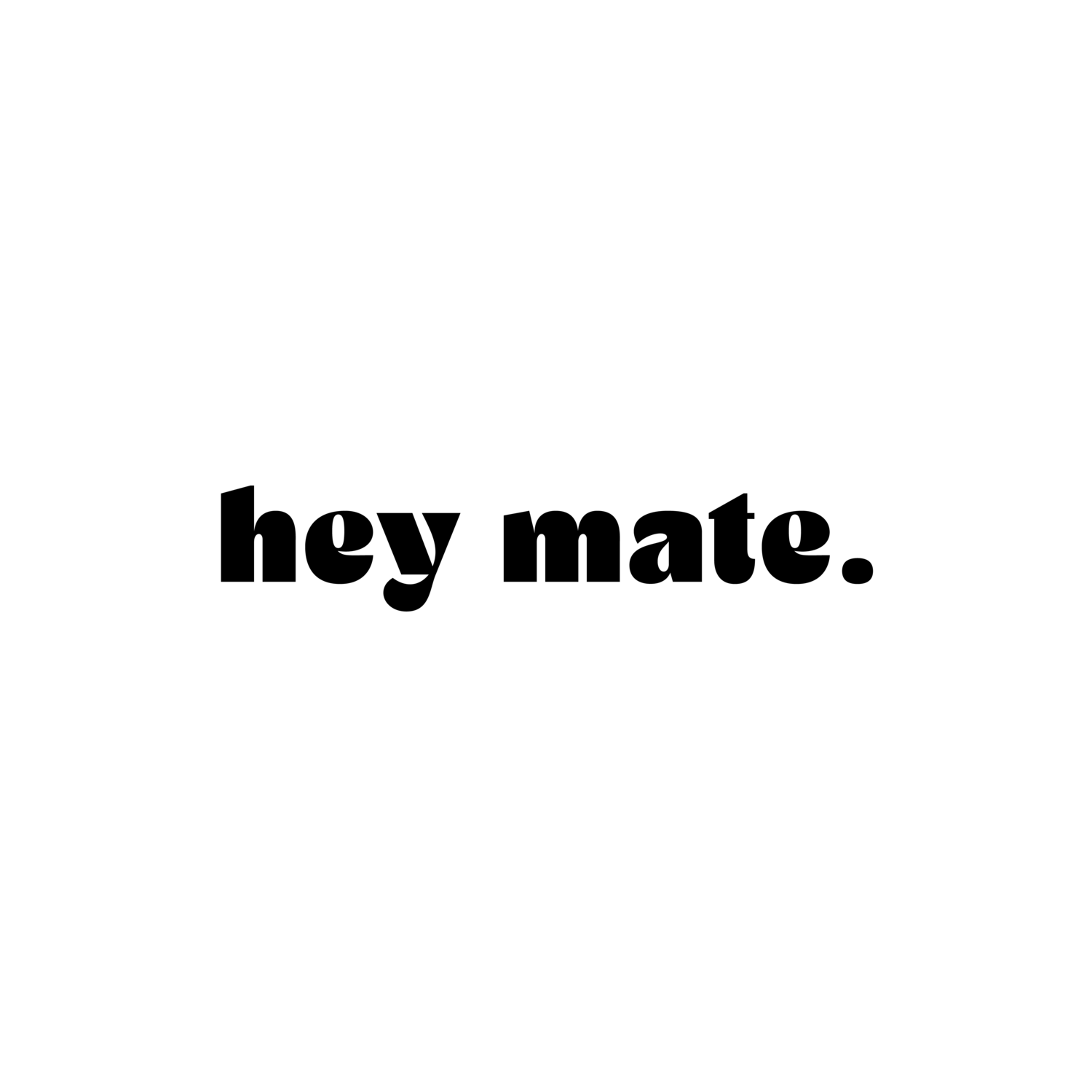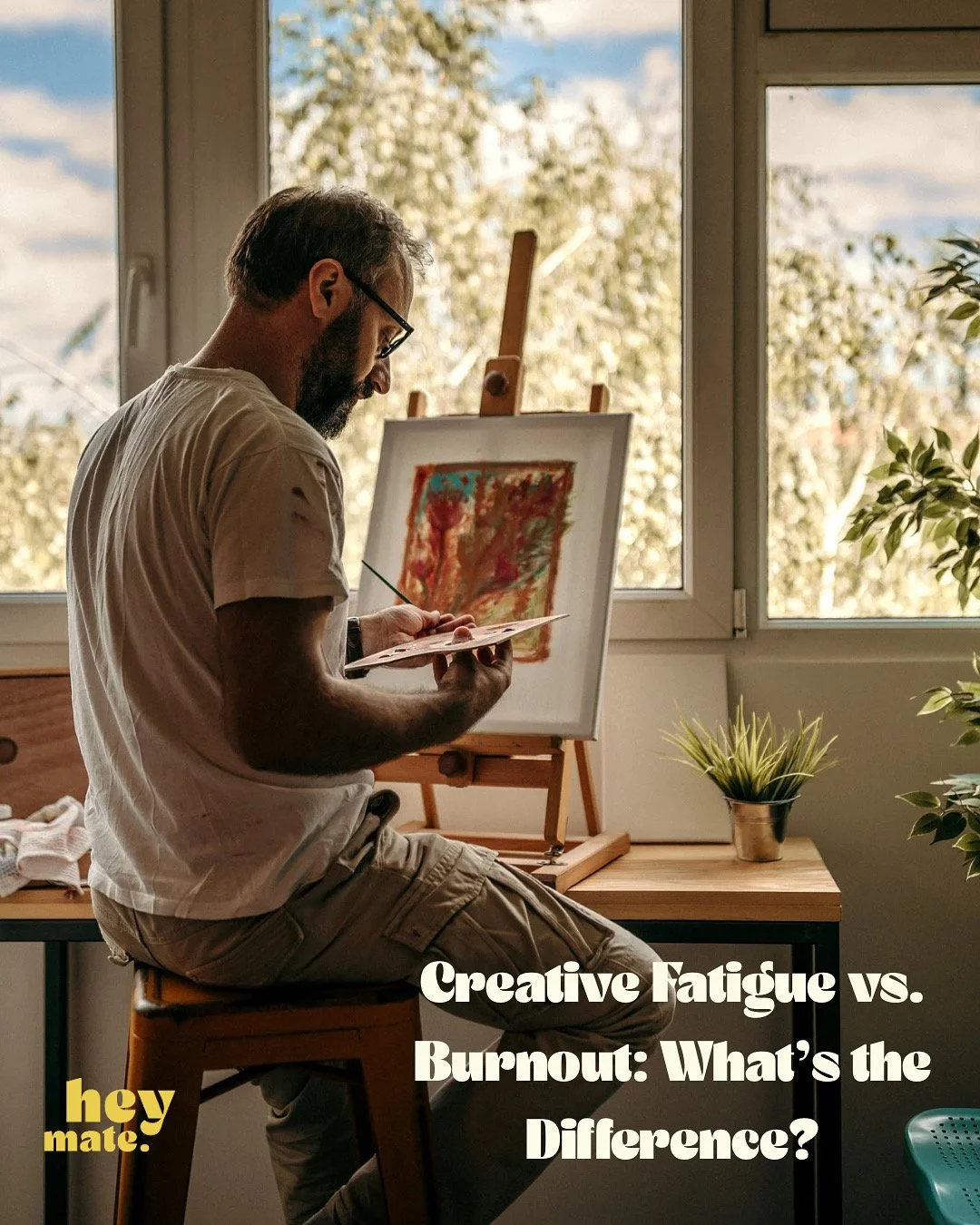🎨 Creative Fatigue vs. Burnout: Knowing the Difference Matters
In the creative industries, we often hear the phrase “Do what you love and you’ll never work a day in your life.”
But for many artists, producers, and cultural workers, that phrase feels painfully untrue.
Doing what you love can still leave you emotionally drained, physically tired, and creatively flat. Sometimes, that’s a sign of creative fatigue — a temporary dip in energy that rest can repair. But if ignored for too long, fatigue can spiral into burnout — a longer-term, systemic exhaustion that can take months (or even years) to recover from.
Understanding where you are on that spectrum matters — for your health, your art, and the future of our creative sector.
🧠 What Is Creative Fatigue?
Creative fatigue is the mental and emotional equivalent of muscle fatigue.
It’s the heaviness you feel after pouring everything into a project — emotionally, physically, and cognitively — and then realising you have nothing left in the tank.
It’s not failure or lack of commitment; it’s a natural response to sustained creative intensity.
You might notice:
You feel uninspired or “blank” even though you still care about your work.
Your focus drifts, and small tasks take twice as long.
You’re emotionally sensitive or easily frustrated.
After a weekend off or a day outdoors, you start to feel more like yourself again.
Creative fatigue is temporary. With rest, nourishment, and balance, your energy and motivation return.
🔥 What Is Burnout?
Burnout is different.
The World Health Organization (WHO) recognises it as an occupational phenomenon caused by chronic workplace stress that hasn’t been successfully managed.
Unlike fatigue, burnout isn’t just tiredness — it’s a total loss of connection to meaning, motivation, and purpose.
It’s when the thing that once made you feel alive now feels impossible.
Burnout can show up as:
Emotional exhaustion that doesn’t lift, even after time off.
Detachment or cynicism toward your work, colleagues, or community.
Feeling ineffective, unappreciated, or like you’re “faking it.”
Trouble sleeping, ongoing anxiety, or physical tension.
In the arts, burnout can be especially dangerous because creative identity is so tightly woven with self-worth. When your art suffers, it can feel like you are failing — when in fact, the system around you may be unsustainable.
📊 The Data We Can’t Ignore
The statistics paint a clear picture of a sector under pressure:
77% of Australian creative workers report experiencing burnout symptoms during their career (Creative Australia, 2023).
In the screen industry, 1 in 2 workers live with ongoing mental-health challenges, most citing overwork and financial insecurity as key causes (Frontiers in Psychology, 2022).
More than 60% of performing arts professionals work outside standard hours, blurring rest boundaries and recovery time (Entertainment Assist, 2023).
The WHO estimates burnout costs the global economy over $322 billion annually in lost productivity and turnover.
These numbers aren’t just data points — they represent the people who make our culture possible: artists, stage managers, curators, editors, producers, and every freelancer keeping the creative ecosystem alive.
💬 “Fatigue is feedback, not failure.”
It’s easy to dismiss exhaustion as “just part of the job.”
But fatigue isn’t a weakness — it’s your body’s built-in early warning system.
The real danger is when creative fatigue is ignored or normalised. Without intervention, it can escalate into burnout — a much harder recovery that often requires clinical or structural support.
At a sector level, that means fewer sustainable careers, greater attrition, and loss of creative talent.
💛 The Unique Pressures of Creative Work
Creative professionals navigate a combination of psychosocial hazards that many other industries don’t face simultaneously:
Irregular income and job insecurity
Public evaluation and criticism
Blurred work–life boundaries (art and identity overlap)
Unpaid or underpaid labour justified by “exposure”
Remote or isolating work environments
Emotionally demanding projects dealing with trauma, identity, or social themes
When these pressures build without structural support, burnout isn’t just likely — it’s inevitable.
That’s why Hey Mate focuses on psychosocial safety — recognising that wellbeing in creative industries is not just about self-care, but about systemic care.
🌿 How to Recover from Creative Fatigue — and Prevent Burnout
1. Rest Without Guilt
Rest is productive. You don’t have to “earn” it. Schedule it like you would a meeting, and respect it just as much.
2. Reconnect With Purpose
Creative fatigue often clouds perspective. Revisit why you create — the joy, curiosity, or community behind the work.
3. Set Clear Boundaries
Passion doesn’t excuse overwork. Protect your mental bandwidth by saying no, communicating limits, and leaving room for recovery.
4. Seek Support Early
Talk to peers, mentors, or wellbeing professionals. Peer-to-peer debriefs and EAP services (like Hey Mate’s) can help you process stress before it compounds.
5. Build Safer Systems
For leaders and organisations: prioritise psychological safety and workload management.
Encourage realistic timelines, fair compensation, and cultures where asking for help is normalised.
⚖️ Creativity Thrives on Balance — Not Overdrive
There’s a persistent myth in the arts that struggle breeds better work.
But the truth is, thriving artists create better art.
When we take fatigue seriously, we build a sector where sustainability and creativity can co-exist.
We make space for innovation, inclusion, and joy — the very qualities that draw us to creative work in the first place.
Fatigue is part of the creative rhythm. Burnout doesn’t have to be.
“When we protect the wellbeing of creatives, we protect culture itself.”
— Aimee Davies, Founder, Hey Mate
About Hey Mate
Hey Mate is an Australian social enterprise supporting mental health, psychosocial safety, and wellbeing across the creative industries.
Through counselling, EAP programs, training, and sector partnerships, we’re building a future where creative people can do their best work — without burning out.


